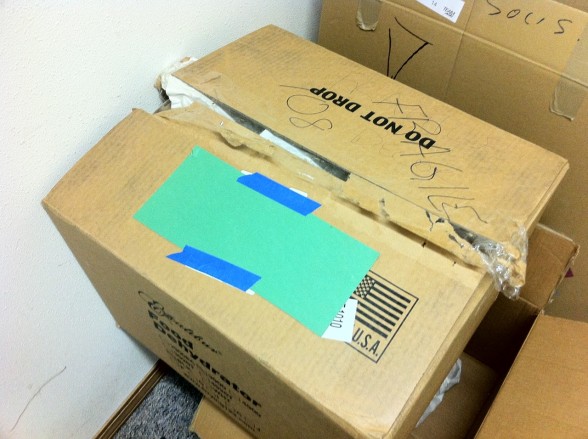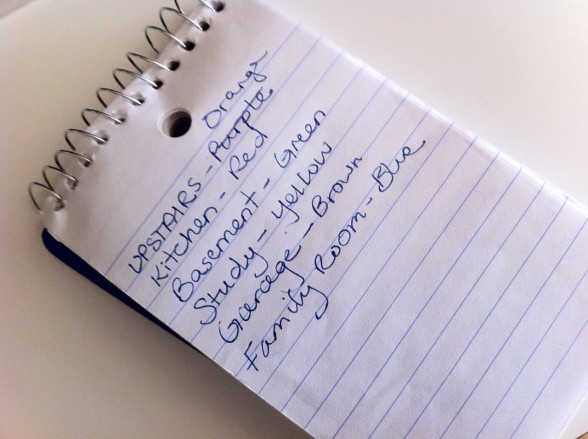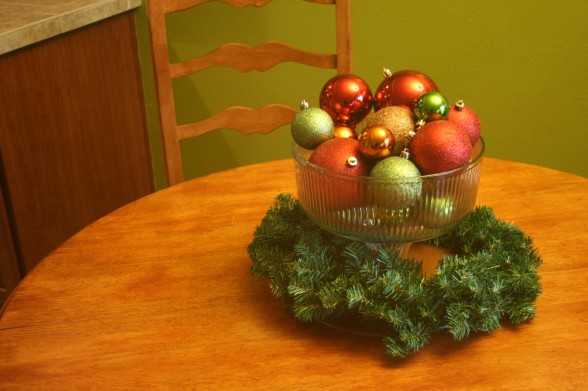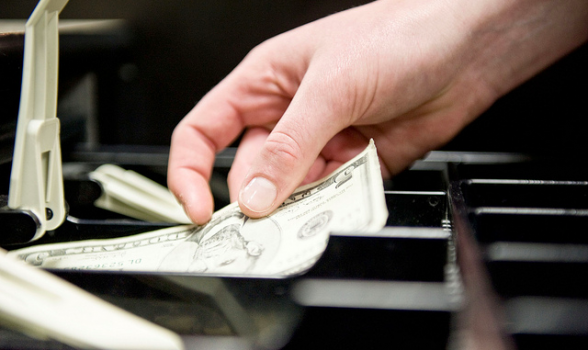 Photo Credit
Photo Credit
Guest post by Kristi McKenney from Courageous Homekeeping.
As hard as it is to believe, Christmas is just around the corner. Are you ready?
Christmas is my very favorite time of year. I love the decorating, the snow…or at least the hope of snow, the lights, the family traditions, the presents, the cookies and the baking. Not to mention, the celebration of the birth of our Savior! I love everything about Christmas.
Except the stress.
Sometimes it is easy to feel overwhelmed and stressed out around Christmastime. There are so many demands. For our time, our commitments and our money.
What are the areas where we feel stress this time of year, and how can we minimize that awful stress?
Money
Ooh, that’s a big one isn’t it? There is always more money that could be spent around Christmas. Bigger presents, better decorations, more food, more clothing…the list could go on. Money stress can be a huge deterrent to full enjoyment of the holiday season. How do you combat it?
Simple. Make a budget. And stick to it. Make a list of people that you will be buying gifts for. Decide together with your spouse how much you’re comfortable spending on each gift. Make sure to consider parties, hostess gifts, food preparation, gift wrapping, and all the extra expenses you will be incurring this month. Agree on limits and stick to them. Start small when your children are young so they don’t grow up with large expectations.
Note from Lindsay: Our Christmas budget is $500 ($250 for personal family gifts, $150 for extended family gifts, $100 for tree, hospitality, and outside holiday entertainment), and this is one we start saving in January. Makes the holidays less stressful for your future reference.
Activities and Commitments
One of the most enjoyable things about the Christmas season is all the activities! So many volunteer opportunities, parties, family gatherings, etc. But sometimes there is SO much activity and SO much to do that it feels more like obligation than a joyful opportunity. How do you make it through without feeling like you’ve been hit by a Mack truck by December 26th?
Sit down with your spouse and make a list of values that are important to you to during the Christmas season. Use the holiday evaluation questions to help guide you in this process. Do you want to make a point to volunteer? Do you want to have ample time with the family? How are you going to keep Christ as the focus? Schedule the things you value on your calendar first as your priorities. With all the other activities and commitments, decide if they support your values or take away from them. If they take away from the values you want to keep during the season, don’t be afraid to say no. Limit your Christmas activities to 2-3 for the month and schedule them in now. Any more than this can certainly be overwhelming. Keep it simple and these activities will be so much more enjoyable as a result.
Preparation
After figuring out your money situation, your activities and commitments, it’s time to make some preparation lists. Think about that company Christmas party. Are you going to need a new dress? New shoes? Are your kids going to need clothing? Are you going to need to bring a gift? Are you going to need to bring food? Thinking about all those things ahead of time will enable you to get things done on your own time. It will save stress and probably money when you don’t have to run to the store, last minute, to buy one ingredient for a dish you have to make for the next day.
Discontentment
Discontentment is not directly related to the Christmas season, but boy can Christmas bring it out! We are constantly comparing ourselves to others!
Whenever you have that nasty feeling of discontentment come up, ask yourself if there’s anything about the situation that you can change. If it’s easily something that is within your control to change than do so!
However, if and when you find yourself in a situation where you’re feeling discontent and there is nothing in the situation you can change, remember this very important thing. There are two very powerful thing you ALWAYS have control over… your attitude and your focus.
When I am feeling discontent about something, usually it is because I have decided that I don’t measure up in some way. When I am feeling like that, who or what am I focused on? Me. I’m not thin enough, I’m not as pretty, my cooking isn’t as good, my house isn’t as decorated. Do you see a theme? Me. I make it all about me.
And it’s not.
It’s about Jesus. It’s about memories. It’s about family. It’s about love.
So…how are you celebrating Christmas this year?
So, how can you grow in cultivating peace in your home?

Kristi McKenney is a busy and happy wife of 12 years and mother to 5 kids, ages 10, 7 and 4 year old triplets! She has found contentment in her God-given role, and most of her days are spent under piles of laundry, cleaning, chasing kids, baking cookies and cooking dinner. You can find Kristi writing full time about God, marriage and family over at www.courageoushomekeeping.com.
 Those little hands grow so quickly!
Those little hands grow so quickly! 



 A nursing cover is a huge asset to have as a new mom as you begin exploring the world of breastfeeding. I have been making my own for several years now. I love to give them as gifts to new moms because they are so nice to maintain privacy and comfort on the go. Nursing covers can be relatively expensive and easy enough to make in the comfort of your home with some basic supplies and simple sewing skills. I usually spend no more than $8-10 for all the supplies necessary for this project. Here is a little tutorial of my most recent cover for your use. This is a large nursing cover, measuring about 42″ x 30″ in the completed product. Most of the standard nursing covers on the market are far smaller and make it more awkward to keep yourself fully covered. I purposefully made this latest one significantly larger to test. The recipient shared that it was a huge improvement! You can certainly adapt the pattern to your own needs by adding extra or decreasing in size as desired.
A nursing cover is a huge asset to have as a new mom as you begin exploring the world of breastfeeding. I have been making my own for several years now. I love to give them as gifts to new moms because they are so nice to maintain privacy and comfort on the go. Nursing covers can be relatively expensive and easy enough to make in the comfort of your home with some basic supplies and simple sewing skills. I usually spend no more than $8-10 for all the supplies necessary for this project. Here is a little tutorial of my most recent cover for your use. This is a large nursing cover, measuring about 42″ x 30″ in the completed product. Most of the standard nursing covers on the market are far smaller and make it more awkward to keep yourself fully covered. I purposefully made this latest one significantly larger to test. The recipient shared that it was a huge improvement! You can certainly adapt the pattern to your own needs by adding extra or decreasing in size as desired.
 Start by picturing your new home and where you would like to relocate your goods. Sketch our a map if desired. Determine as you pack where they will be put in your new home. Chose a color for each new room in your home and then tape a construction piece of paper in that color on the box. When you move the boxes, then you can know easily where each box is going and then it is easy to unpack!
Start by picturing your new home and where you would like to relocate your goods. Sketch our a map if desired. Determine as you pack where they will be put in your new home. Chose a color for each new room in your home and then tape a construction piece of paper in that color on the box. When you move the boxes, then you can know easily where each box is going and then it is easy to unpack! Rather than just randomly labeling each box with the contents, we chose to use the number system with a master itemized spreadsheet. I would number each box starting at 100 and make a quick list of the contents of each box on my spreadsheet. Each box would simply get the number written on several sides.
Rather than just randomly labeling each box with the contents, we chose to use the number system with a master itemized spreadsheet. I would number each box starting at 100 and make a quick list of the contents of each box on my spreadsheet. Each box would simply get the number written on several sides.








